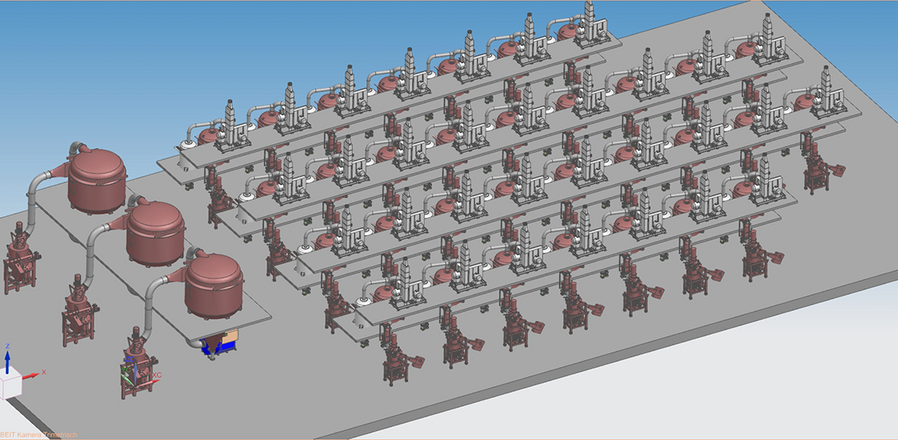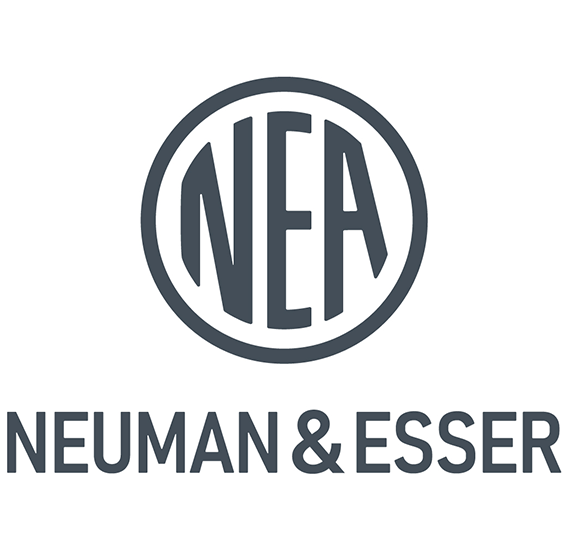
Graphite is the largest component of high-performance batteries. In order to the batteries to have a high energy density and fast charging cycles, the graphite must be used as efficiently as possible. Both the particle size distribution and the roundness, or sphericity, of the particles are crucial for this.
A differentiation between the raw materials natural flake graphite and petroleum coke (for synthetic graphite) must be made. Natural graphite has extremely flat, almost 2-dimensional particles. Petroleum coke, on the other hand, has a more acicular, spatial shape. The requirements for rounding or spheronization also differ accordingly. For example, natural graphite must be rounded to tapped densities of up to > 1g/ml, while petroleum coke as the starting material for synthetic anode graphite may have tapped densities in the range of 0.7-0.9 g/ml. The tapped density measurement is a method for determining roundness, whereby it is assumed that rounder particles have a higher density. The different requirements call for different solutions in the production of the individual materials.
These quality requirements mean that the undesirable part of the starting material, i.e. the finest particles, which can have a performance-reducing effect in subsequent production steps and in the battery, must be removed. This production fraction reduces the yield of the overall process and cannot be used as anode graphite. It is important for the industry to keep the proportion of ultrafine particles low and the overall yield of the process as high as possible.

Traditionally, the production of spherical anode graphite is based on the series connection of 20-30 impact classifier mills. The grinding, classifying and rounding processes are carried out simultaneously to achieve the particle size and distribution as well as the desired shape. Hence, it is not possible to address and set the quality criteria individually. We have therefore developed the NEA|Shere solutions to increase efficiency, reduce process complexity and achieve high production capacities.
The overall process was split into a grinding process, a classifying process, and a rounding process. We have developed three NEA|Sphere basic aggregates for optimum individual process control based on our existing products and technologies. To consider the mentioned differences between natural graphite and petroleum coke as well as synthetic graphite, there are two variants of each. These are each designated with an appended "n" for natural graphite or an "s" for synthetic graphite and its starting materials.
In order to produce fine particles with a steep particle size distribution, i.e. a low proportion of so-called "superfines", the NEA|Sphere M was equipped with high-intensity grinding tools and a highly efficient integrated classifier module. The material is ground to the desired fineness on this mill, but overgrinding is avoided.
With tools specifically designed for the purpose of spheronization and the highly efficient integrated classification module, the NEA|Sphere S enables the complete rounding of particles in a single step. This allows the yield of the rounding process to be significantly increased.
For special challenges in particle size ratios, such as a particularly narrow d90/d10 ratios, NEUMAN & ESSER has developed the NEA|Sphere C classifier based on the proven GRC guide ring classifier. This unit also allows efficient fractionation of flake-shaped products. This increases the overall yield of the process to be further.
Our individual customer solutions combine the NEA|Sphere M, S and C units intelligently, considering the required quality criteria, the raw material, and the necessary production capacities.
For synthetic graphite or petroleum coke, the combination of NEA|Sphere Ms and NEA|Sphere Ss is often adequate. Finer natural anode graphites with the analogous aggregates NEA|Sphere Mn and NEA|Sphere Sn with high yields can also be produced. To produce a coarser natural anode graphite, however, the additional use of NEA|Sphere Cn is recommended.
